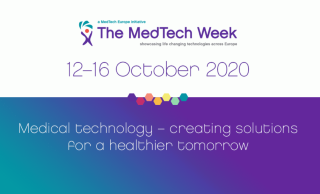Stephanie Haack, Germany
“When I was first diagnosed, it was really hard to get me excited about diabetes tech. I didn’t care much about any new features and gimmicks and all the exciting things I could do with them. To be honest, I just wanted to get on with my life and I wasn’t interested in spending any more time and energy on my diabetes management than I had to. Today, more than 11 years later, advancements in diabetes tech fascinate me more than anything and I love trying new equipment.
But my main focus from back then hasn’t changed: I want tech to make life with diabetes easier. I don’t want to play around with a million little features, I don’t want to manually log and analyse lots of data. What I want is to put less time, energy and brain power into my diabetes management.
That’s why I’m most excited about automated insulin delivery systems. When technology automates daily routines, assists decision making and picks up the slack while I’m busy or asleep - that’s when it really lightens the load of living with diabetes. Less diabetes. More living!”
Kelly Kunik, USA
“When I was diagnosed in 1977, there was no diabetes technology or ‘smart insulins.’ I received my first official piece of diabetes tech in 1981, which was a glucose meter that I shared with my dad and older sister (also T1s).
It took three minutes to give a reading and required a ridiculous amount of blood via a painful harpoon lancing device. Said meter was as large as a VHS tape, came with a 50 page Instruction book and my family took a class with the pharmacist to learn how to use it. My dad took lots of notes, and I don’t think the meter was even covered through our insurance.
So, we’ve come a long way!
In the near future I look forward to having my choice of diabetes robot parts that can help me to achieve Time-In-Range with less energy – using advances in connectivity to seamlessly communicate with one another across partnerships, and no matter what type of insurance I have.”
Renza Scibilia, Australia
“In the 22 years I've lived with diabetes, technology has been integral in helping me manage my condition as best as I can. While claims on the shiny boxes promising to make my diabetes life easier have been mostly true, there is also an undeniable reality that technology also has the potential to add burden. While we wait for the holy grail of a diabetes cure, technology advancements need to deliver all those promises without also adding additional weight to the already significant load of diabetes.
Automation - real, fully customizable automation is the goal for me, with technology being very much user-led in development and delivery. To make this a reality, technological advances in artificial intelligence and machine learning will be key enablers. And then, once it is available, there should be as few barriers as possible to access, ensuring that not only the lucky few are able to benefit from the advancements.”
These perspectives from people with diabetes demonstrate the importance of our work to develop the next generation of diabetes technology and highlight the potential benefits of future advances in medical technology for people with diabetes.



